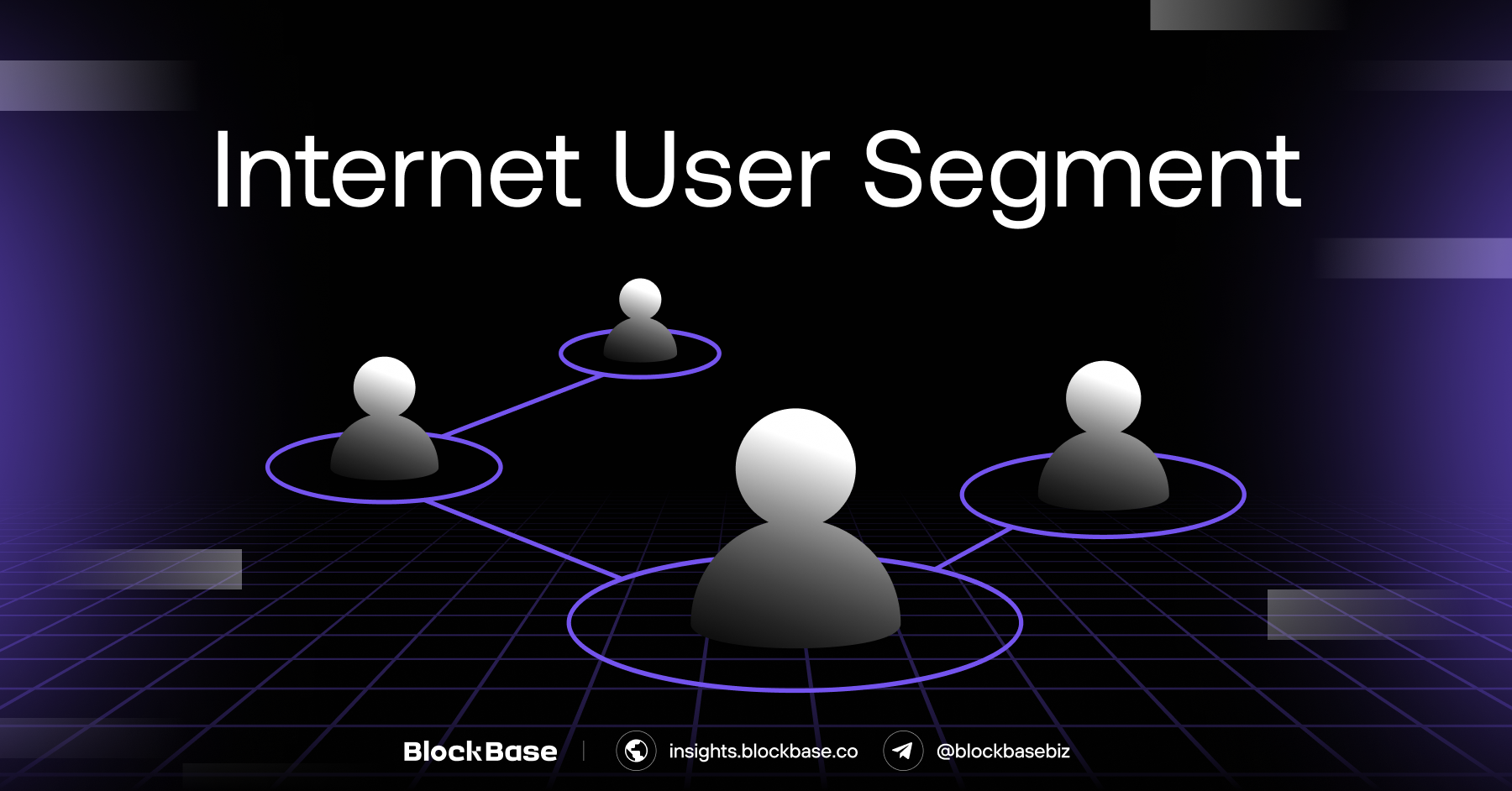TL;DR
- Geography: Asia (especially China, India, Indonesia, Japan, Philippines, and Vietnam) is the region with the largest number of internet users in the world.
- Income: Lower-middle and upper-middle-income countries account for the majority of internet users – 74.1%, even though they only make up 53.4% of the world’s population. Most of Asia’s internet users come from upper-middle-income countries (45.6%) and lower-middle-income countries (44.3%).
- Age group: The age groups with the most internet users and who spend the most time online are the 18-24 and 25-34 age groups. On average, young users aged 16-34 spend more than 7 hours a day on the internet. As people age, the amount of time spent online per day decreases.
- Identity verification on social media platforms: About 0.1% of social media users are willing to pay for identity verification.
- Internet fees: Asian countries have the lowest internet costs in the world.
- Phone usage rate: About 60% of the population in Asia uses phones, making it the region with the largest number of phone users in the world, a figure that closely mirrors the number of internet users.
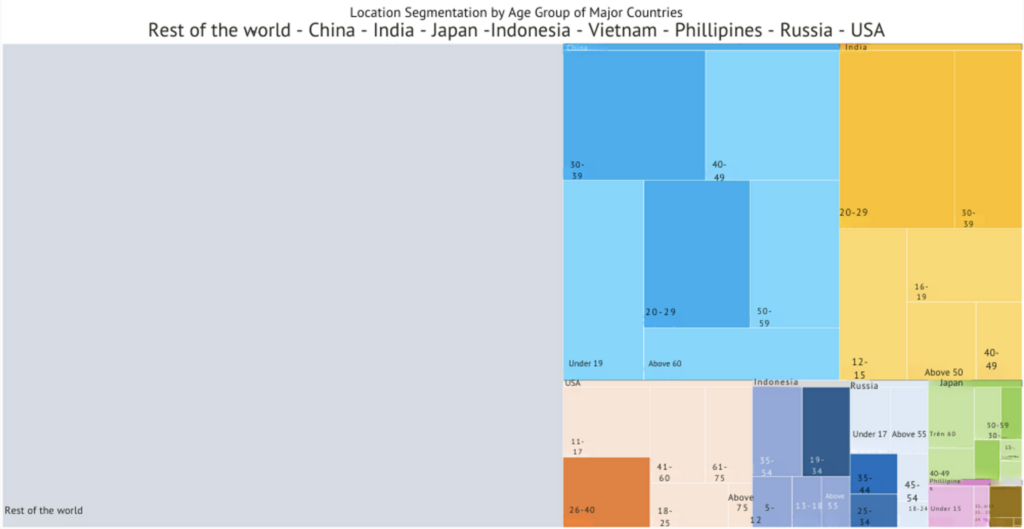
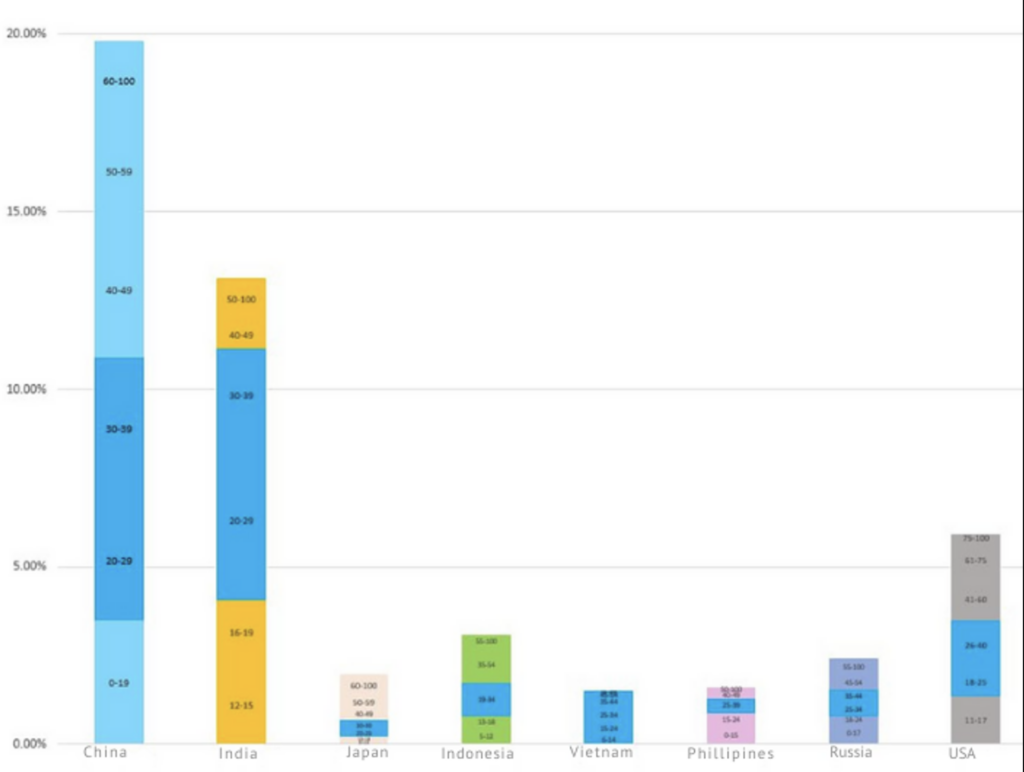
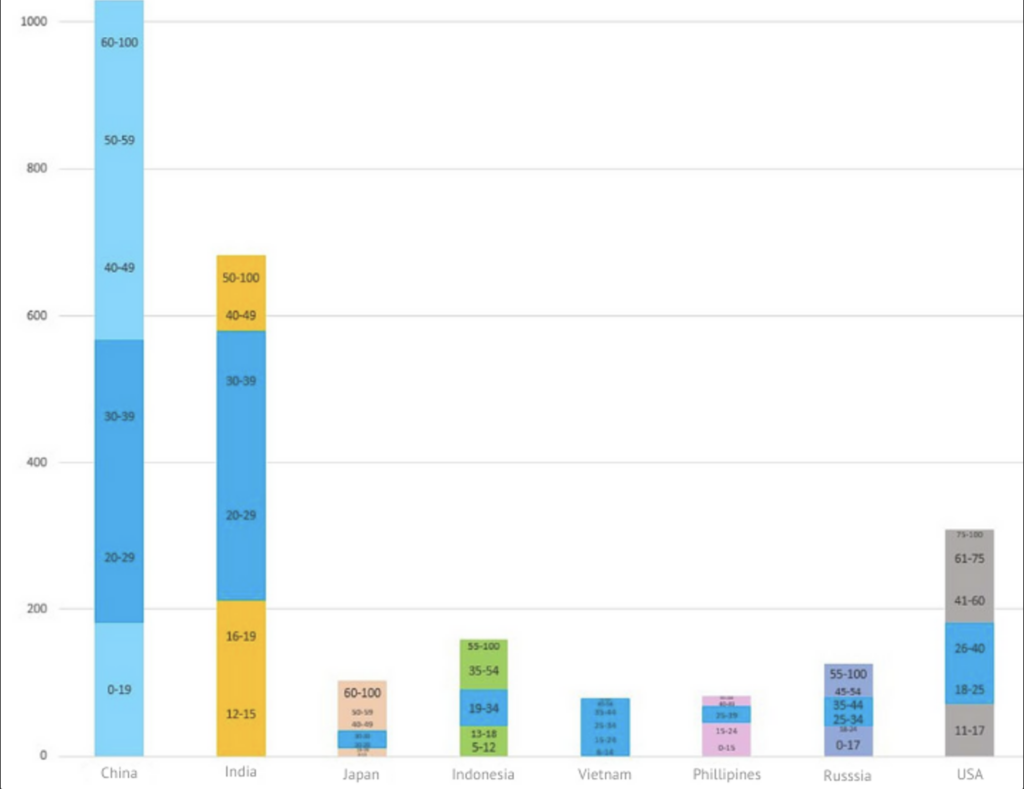
I. Geography
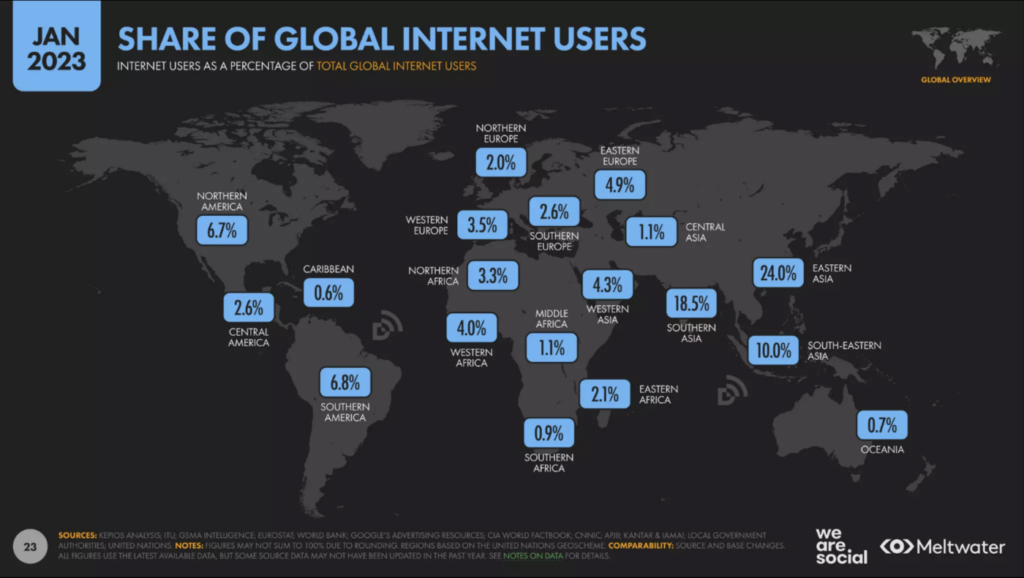
According to Meltwater, East Asia, South Asia, and Southeast Asia are the three regions with the largest number of internet users in the world.
As of January 2023, 64.4% of the world’s population uses the internet, which is approximately 5.2 billion people – (Marketing Information: 5.3B).
1. East Asia
| Country | Internet Usage Rate (%) | Population (million people) | Number of Internet Users (million people) |
| China | 73.7% | 1400 | 1031 |
| Japan | 82.9% | 125 | 103.6 |
| South Korea | 97.6% | 51.3 | 50 |
| Taiwan | 90.7% | 23.6 | 21.4 |
| Hong Kong | 93.1% | 7.5 | 6.9 |
2. South Asia
| Country | Internet Usage Rate (%) | Population (million people) | Number of Internet Users (million people) |
| India | 48.7% | 1400 | 681 |
3. Southeast Asia
| Country | Internet Usage Rate (%) | Population (million people) | Number of Internet Users (million people) |
| Philippines | 73.1% | 113.5 | 82.9 |
| Vietnam | 79.1% | 99 | 78.3 |
| Thailand | 85.3% | 70 | 59.7 |
| Malaysia | 96.8% | 33.4 | 32.3 |
4. Other Regions
| Country | Internet Usage Rate (%) | Population (million people) | Number of Internet Users (million people) |
| United States | 91.8% | 336.1 | 308.5 |
| Russia | 88.2% | 145.6 | 128.4 |
| Germany | 93.1% | 83.8 | 78 |
| United Kingdom | 97.8% | 68.6 | 67 |
5. Conclusion
- Additionally, there are four other markets worth keeping an eye on: Russia, Japan, the Philippines, and Vietnam.
- From a geographical perspective, the four most promising markets are China, India, the United States, and Indonesia.
| Country | Internet Usage Rate (%) | Population (million people) | Number of Internet Users (million people) |
| China | 73.7% | 1400 | 1031 |
| India | 48.7% | 1400 | 681 |
| United States | 91.8% | 336.1 | 308.5 |
| Indonesia | 77% | 281 | 216 |
| Russia | 88.2% | 145.6 | 128.4 |
| Japan | 82.9% | 125 | 103.6 |
| Philippines | 73.1% | 113.5 | 82.9 |
| Vietnam | 79.1% | 99 | 78.3 |
6. Chart demonstration
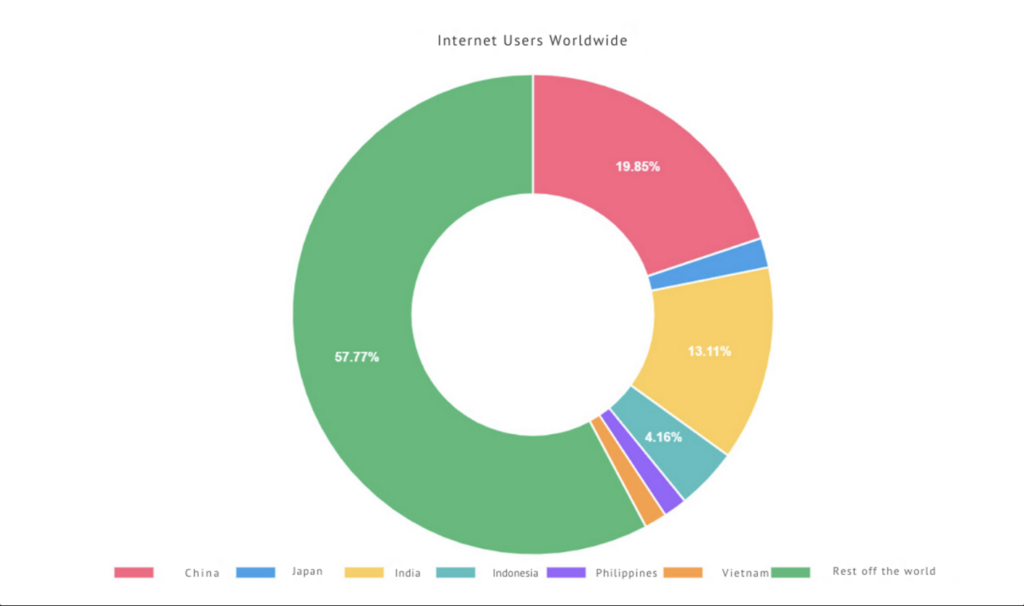
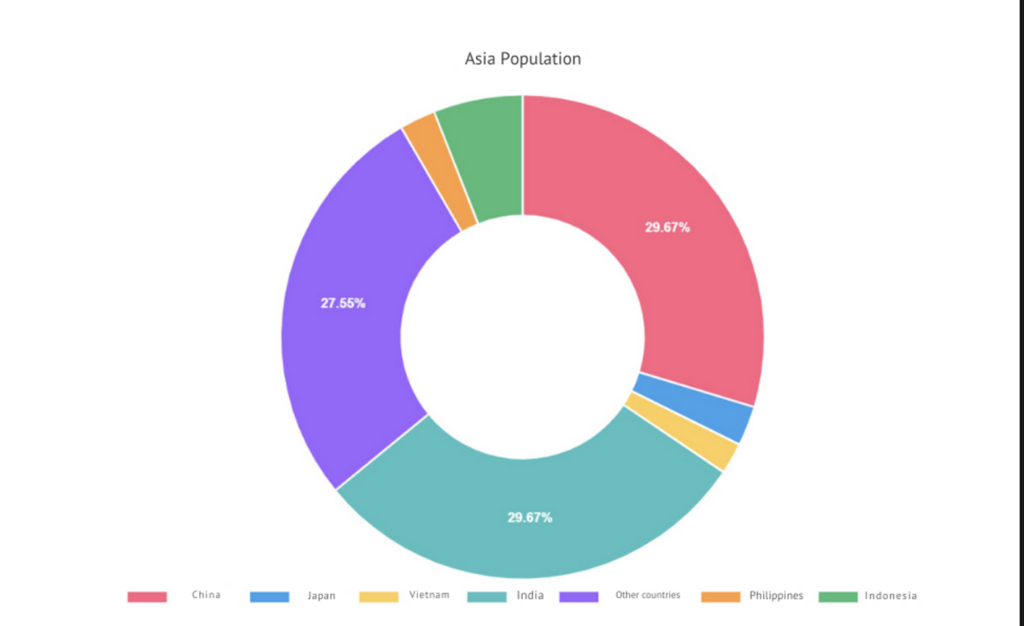
II. Income bracket
- Based on the international income standards for the global population as defined by the IMF & World Bank, the global internet users can be classified as follows.
- Fun fact: The per capita Gross National Income (GNI) reflects the total economic output of a country divided by its population, commonly used as a comparative measure between countries rather than an absolute measure of income levels.
| Low-income countries | GNI per capita of ≤$1,085 |
| Lower-middle-income countries | GNI per capita between $1,086 – $4,255 |
| Upper-middle-income countries | GNI per capita between $4,256 – $13205 |
| High-income countries | GNI per capita of ≥$13,205 |
In 2020, the percentage of individuals using the Internet (% of the population) in low, middle, and high-income countries were 19%, 57%, and 89% respectively, according to the World Bank.
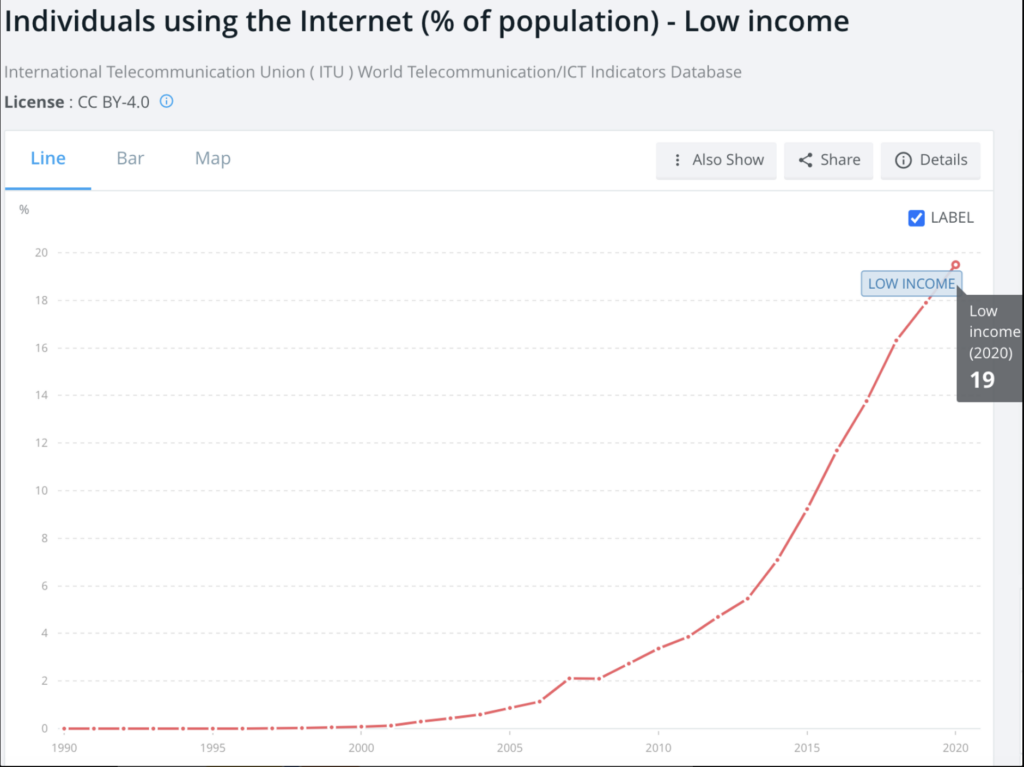
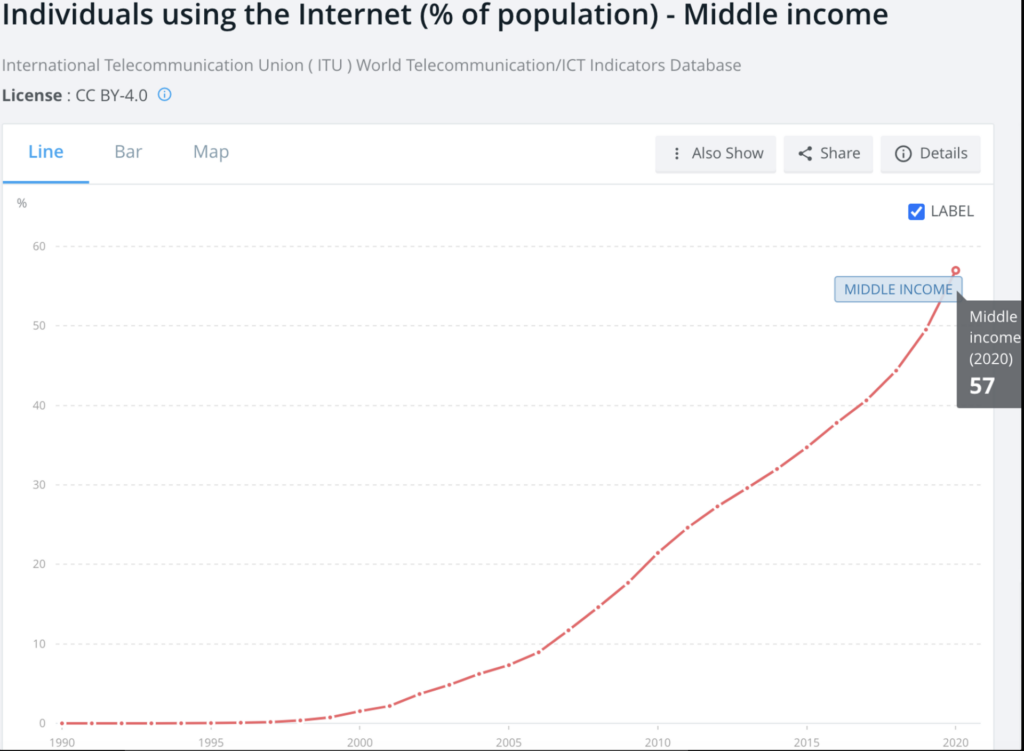
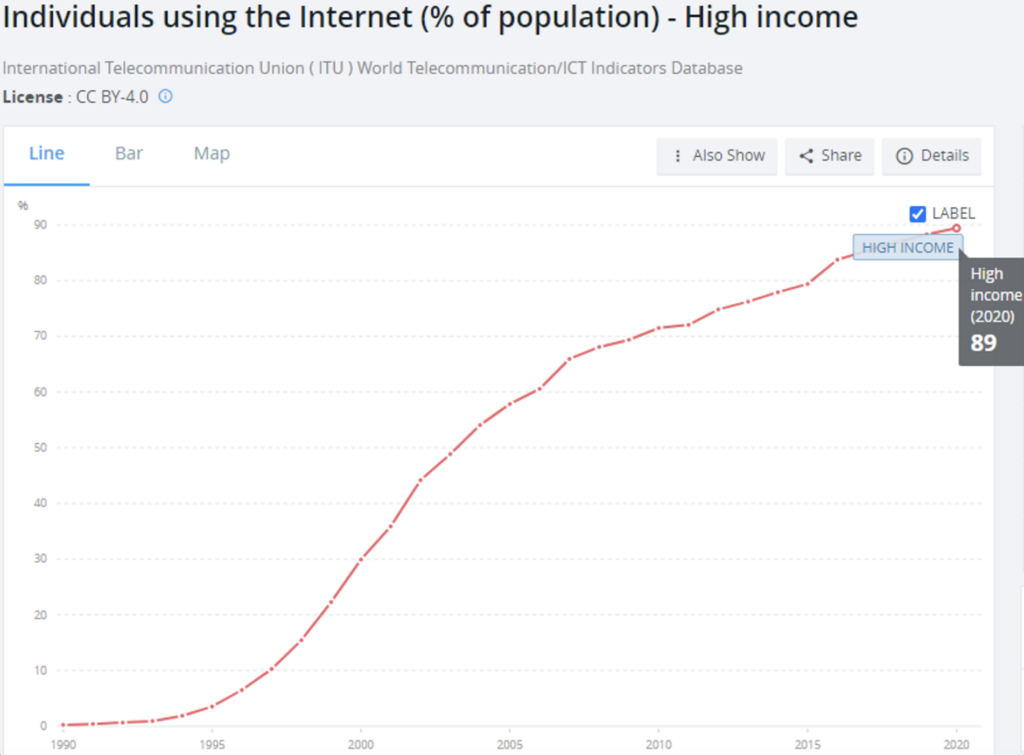
- After calculating, the author created a Pie Chart with the proportions below:
Calculation method for income group distribution: Use the metric of internet users (% of the population) of a group of countries from the World Bank.
For example: individuals using the internet (% of the population) of low-income countries in 2020 is 19%.
- Multiply this data by the total population of low-income countries, from the same World Bank source. (19% * 0.7B) = 0.133B = Number of internet users in low-income countries.
- Divide this number by the total internet users from the World Bank (2020): (0.133B / 4.6B) * 100 = 2.89%. ⇒ From this, we get the proportion of internet users in low-income countries within the global internet user population.
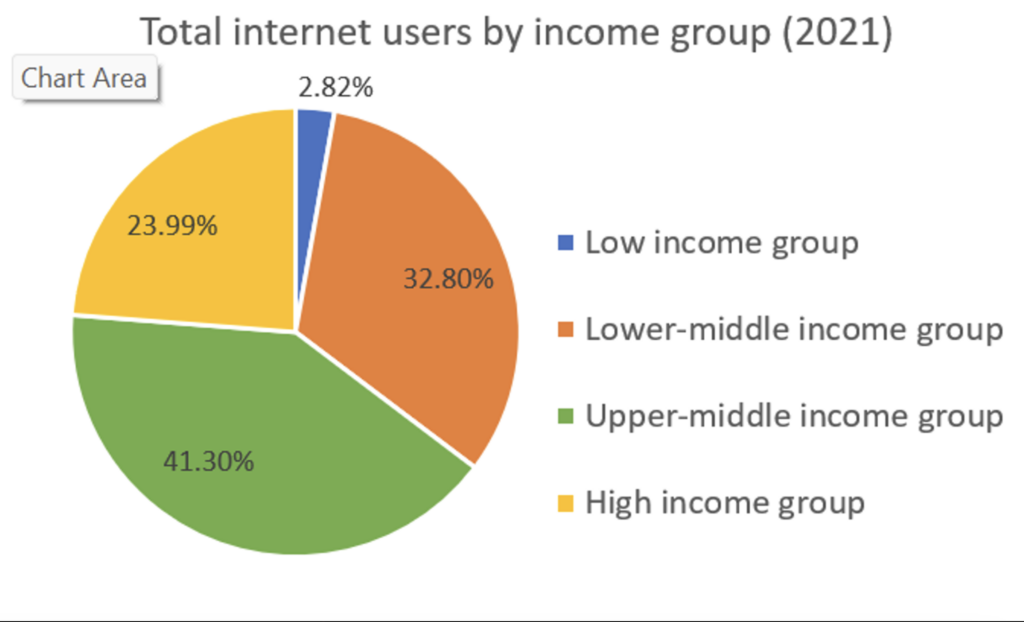
Conclusion:
- Although high-income countries account for less than a quarter of the global population, they have nearly a quarter of the world’s internet users.
- Lower-middle and upper-middle-income countries make up the majority of internet users – 74.1%, despite representing only 53.4% of the world’s population.
- Low-income countries have the lowest proportion of internet users, only 2.82%, highlighting a significant gap in internet access and infrastructure and the affordability of subscriptions between low-income countries and the rest of the world.
More information
- According to Euromonitor International, there will be 1 billion new global internet users by the end of 2027, with the middle-income class being up-and-coming.
- These new users will primarily come from developing and emerging countries in South Asia and Africa, including India, China, Pakistan, Indonesia, and Nigeria.
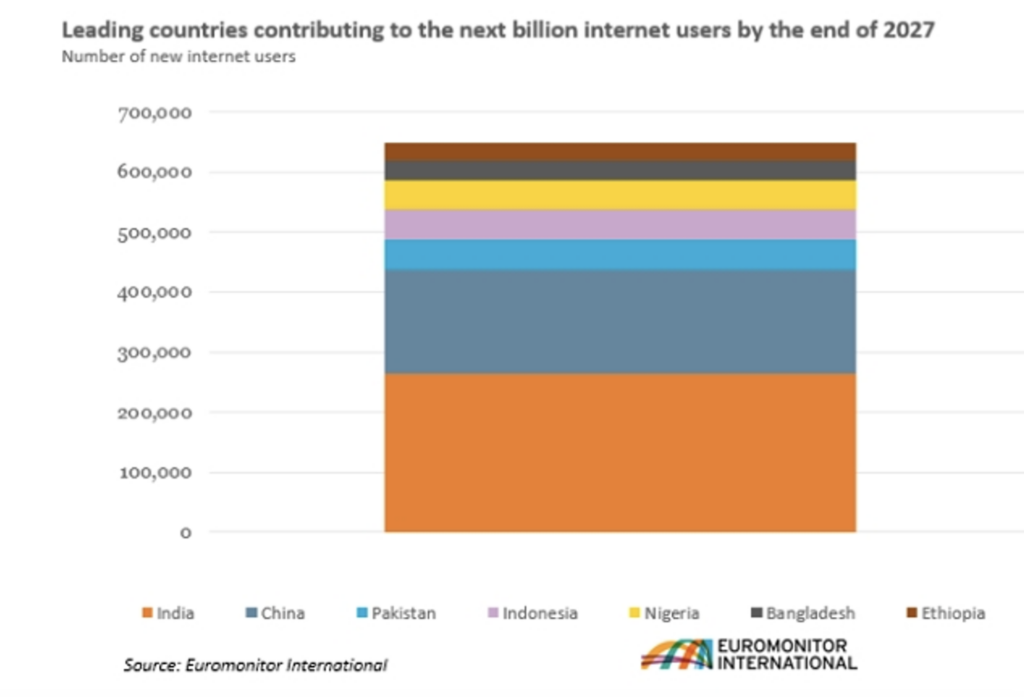
Fun fact
The middle-income class includes households with annual disposable incomes of:
- $45,000-100,000 in developed economies (corresponding to segment B) according to Euromonitor International’s Income Band Expenditure Model.
- $15,000-45,000 in emerging markets and developing economies (corresponding to segment C).
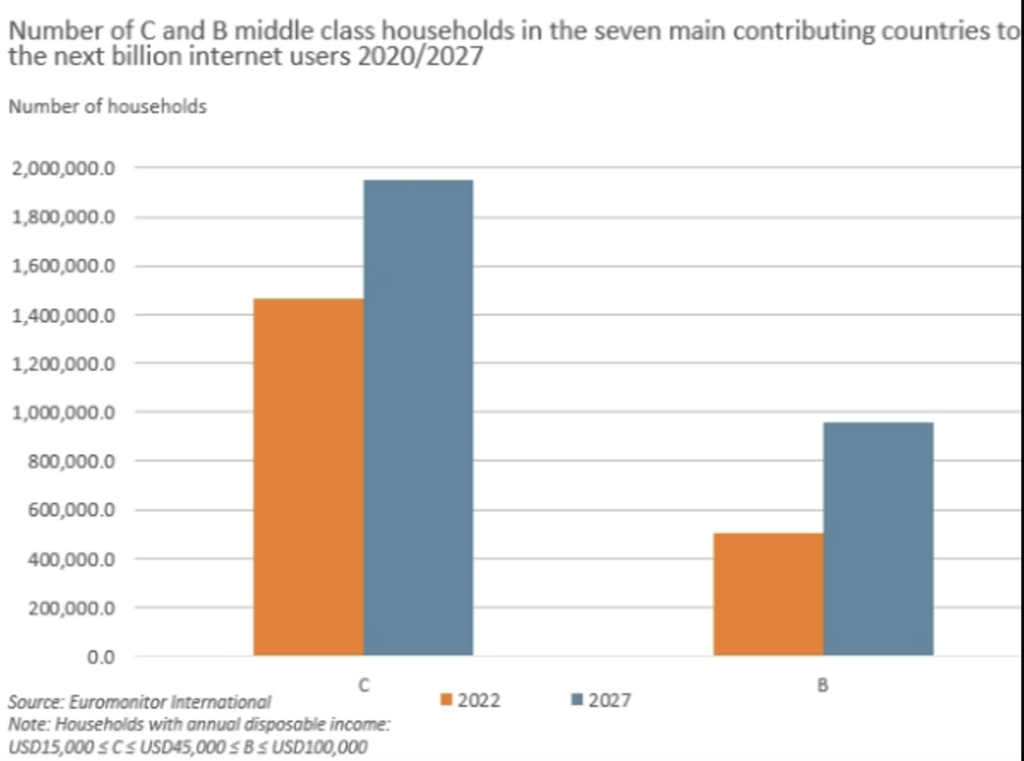
After initial research, the author found that the characteristics, preferences, and behaviors of new internet users from emerging economies often include:
- Prioritizing mobile devices, meaning they use smartphones as the primary device to access the internet. BlockBase needs to optimize the browser for smooth and user-friendly mobile usage.
- Social media platforms are extremely popular in many emerging economies (WeChat, WhatsApp, LINE…), so incorporating social features into the product is advisable.
Example:
- Many users in emerging economies are very “PRICE-SENSITIVE”, meaning they prefer to use free or low-cost products rather than pay for premium services.
- Many of these new internet users will be young and tech-savvy, particularly interested in social media, online entertainment, and e-commerce.
- BlockBase should localize the product for different languages and cultures.
1. Main Purposes for Using the Internet
According to DataReport, the main purposes of internet usage include:
- Research: Searching for information on tutorials, education, health issues, and travel.
- Entertainment: Watching TV shows and listening to music.
- Communication/Networking: Keeping in touch and forming new relationships.

Classification by Education Levels In European
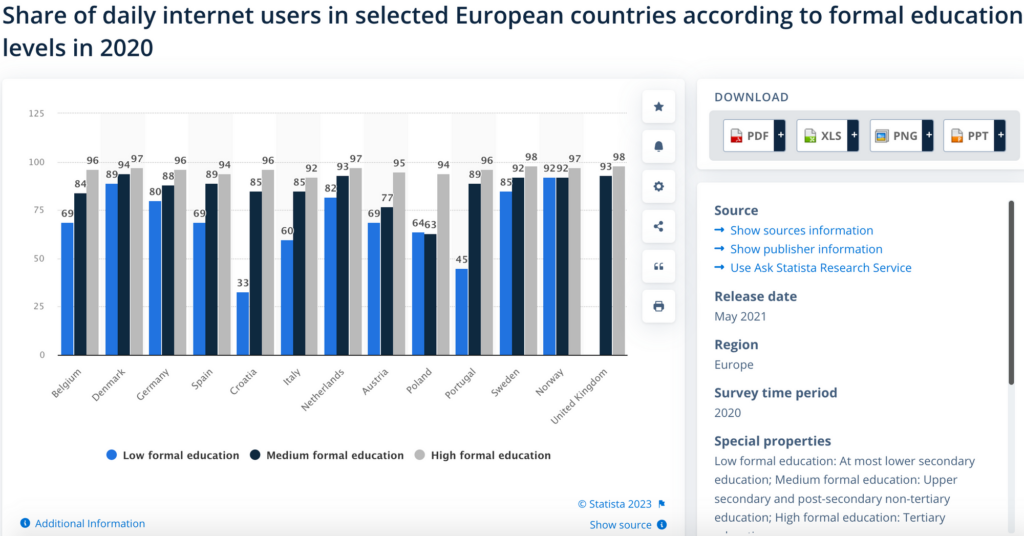
Classification by Annual Household income in U.S
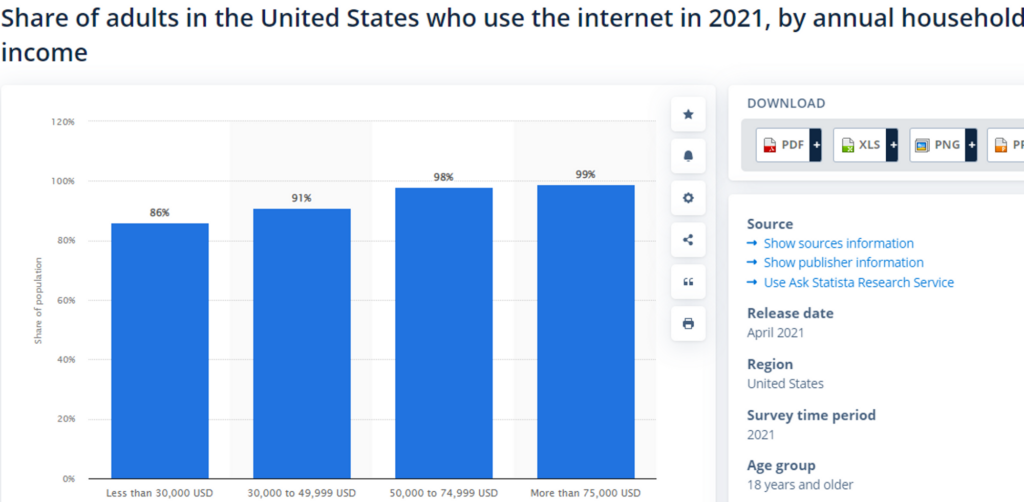
Income distribution by Asia countries
The majority of Asia’s internet users come from upper-middle-income countries (45.6%) and lower-middle-income countries (44.3%) – World Bank 2020.
In this context, China leads with over 1 billion internet users (~40% of the total internet users in Asia), followed by India and Indonesia.
| Percentage of using the Internet (%) | Internet users (billion) | Crypto Adoption Rank (according Chainalysis) | |
| China | 74% | 1.05 | 10 |
| India | 49% | 692 | 4 |
| indonesia | 77% | 213 | 20 |
| Japan | 83% | 103 | Friendly |
| Vietnam | 79% | 78 | 1 |
Conclusion
- Japan is the only high-income country with the highest percentage of the population using the internet in the Watchlist.
- The majority of the remaining countries are from the lower-middle-income group, including India, Indonesia, and Vietnam.
- Combined with the Euromonitor report predicting an additional 1 billion internet users in the next 5 years, India, China, and Indonesia are potential markets to study the growth of the internet. Given the good crypto adoption rates in China, Indonesia, Vietnam, and India, the author recommends conducting further specific research on these markets.

2. Income distribution within a country
2.1. Vietnam
- With an average internet service fee of only $11.27 per month, Vietnam is one of the countries with the cheapest internet rates in Asia and globally.
- Although there is no information on the price of a smartphone device, up to 94.5% of users connect to the internet through mobile phones.

- However, the average price of 1GB of data is relatively high compared to the top internet-using countries (0.2% of monthly income compared to 0.09% in India and 0.04% in China).

2.2. India
- 96% of users access the internet for entertainment, while 90% use it for communication and 82% for accessing social media platforms.
- Approximately 45% have engaged in some form of online transaction, and 28% frequently shop online.
- Rural areas have more than 425 million internet users, 44% more than urban areas, which have 295 million users, according to Nielsen.
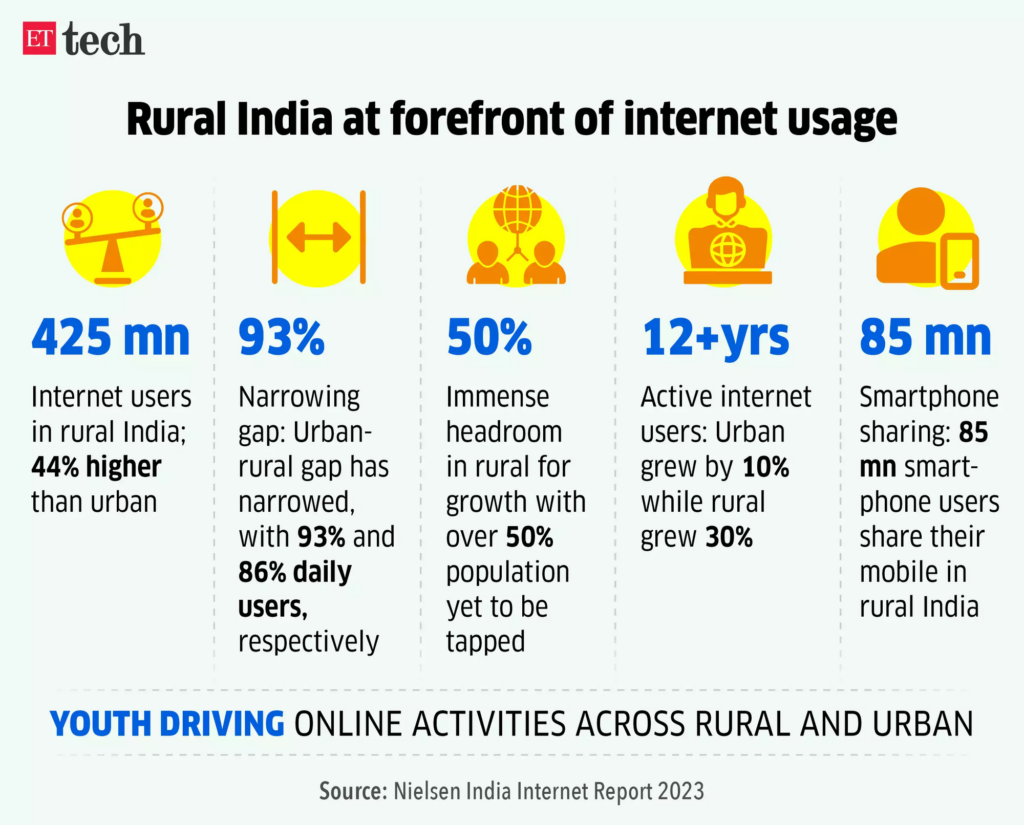
- While the cost of data is approximately 0.09% of the average monthly income, the price of a smartphone device accounts for more than one-third of an individual’s monthly income in India.
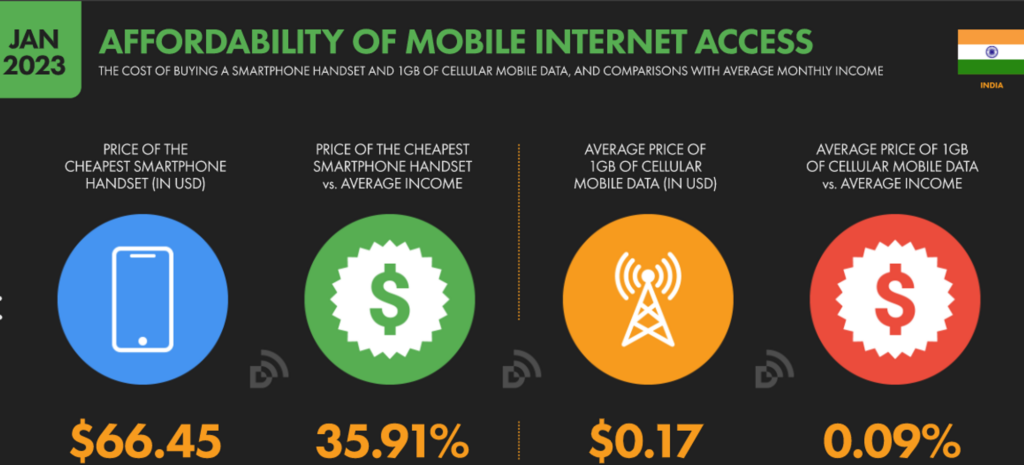
- There is no data on internet users by income distribution, but there is a statistical report on the next half billion internet users in India by 2022.
- These users will have an average income of $300 per month.
- 60% will come from the lower-middle-income and low-income classes.

2.3. Philippines
- There is no report on internet users in the Philippines by income distribution.
- According to data, 80% of the high-income class are internet users, while this figure is 61% for the low-income class.
- It can be seen that internet penetration in the Philippines is still limited.
2.4. China
- The cost for 1GB of data is very affordable compared to the monthly income of the citizens (about 0.04% of monthly income).
- Smartphones are also reasonably priced, costing only about 13% of a citizen’s monthly income.
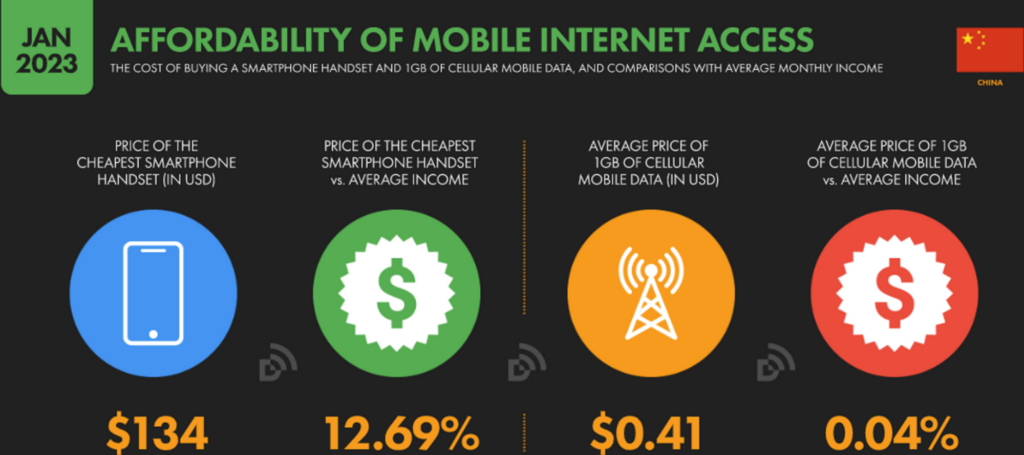
- Statistics on the monthly income of internet users in China from 2010 to 2020 show a shift in internet usage from predominantly low-income users (who made up a large percentage of internet users in 2010) to middle-to-upper income classes (who made up a large percentage of internet users in 2020).

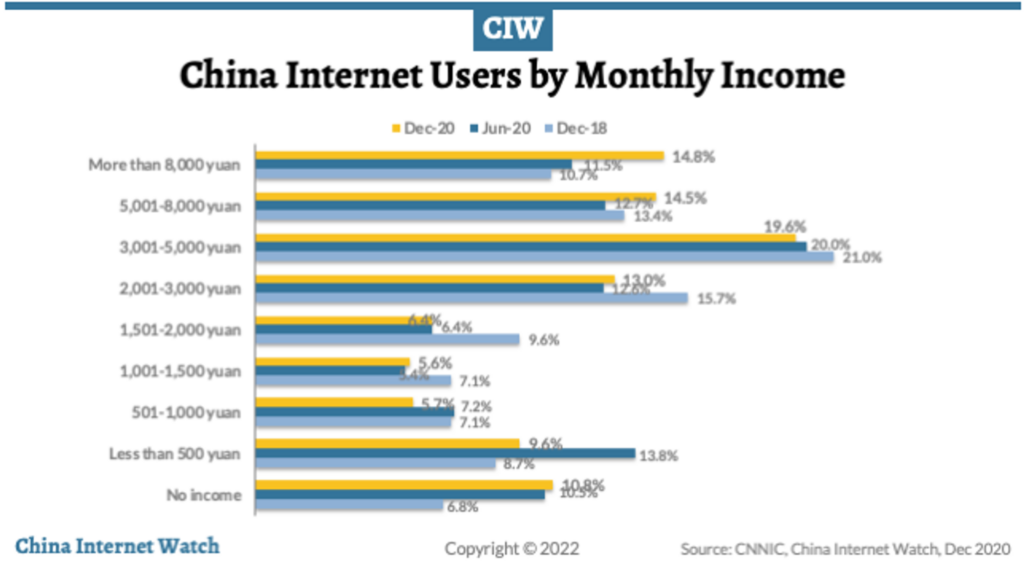
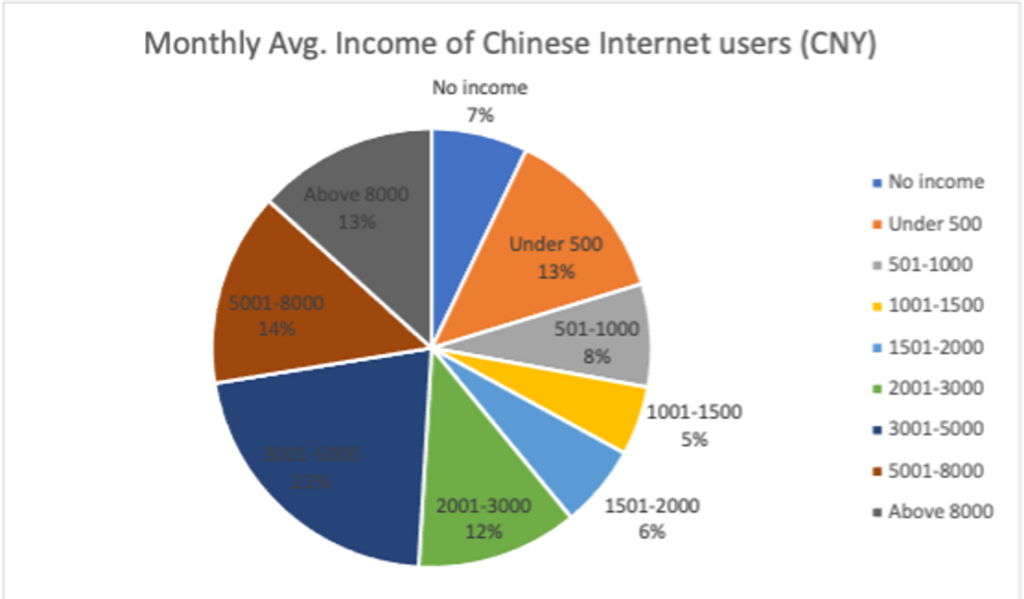
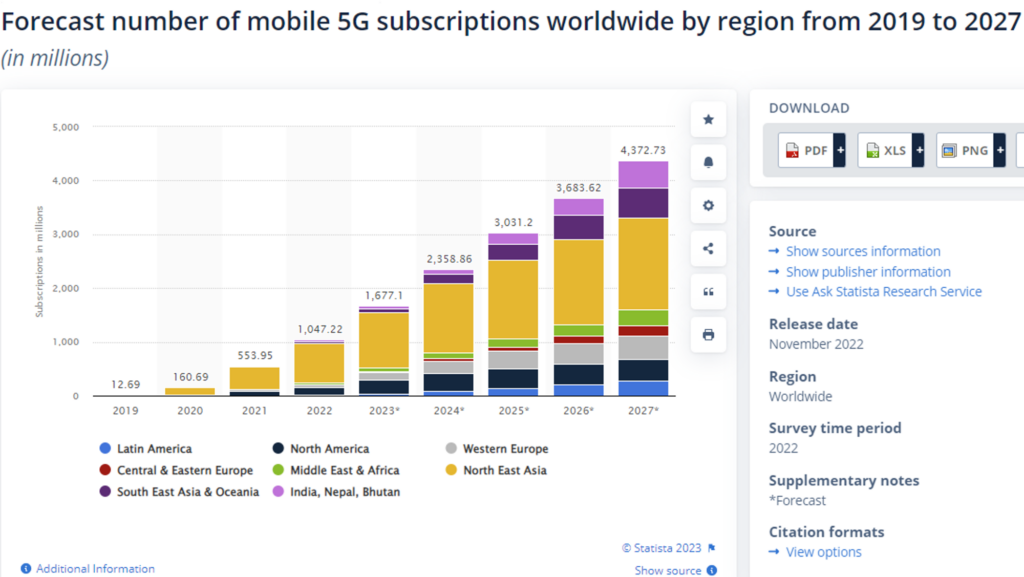
III. Age group
The age groups with the most internet users and who spend the most time online are the 18-24 and 25-34 age groups. Fun fact: The percentage of internet users who own cryptocurrency is highest among the 18-24 and 25-34 age groups.
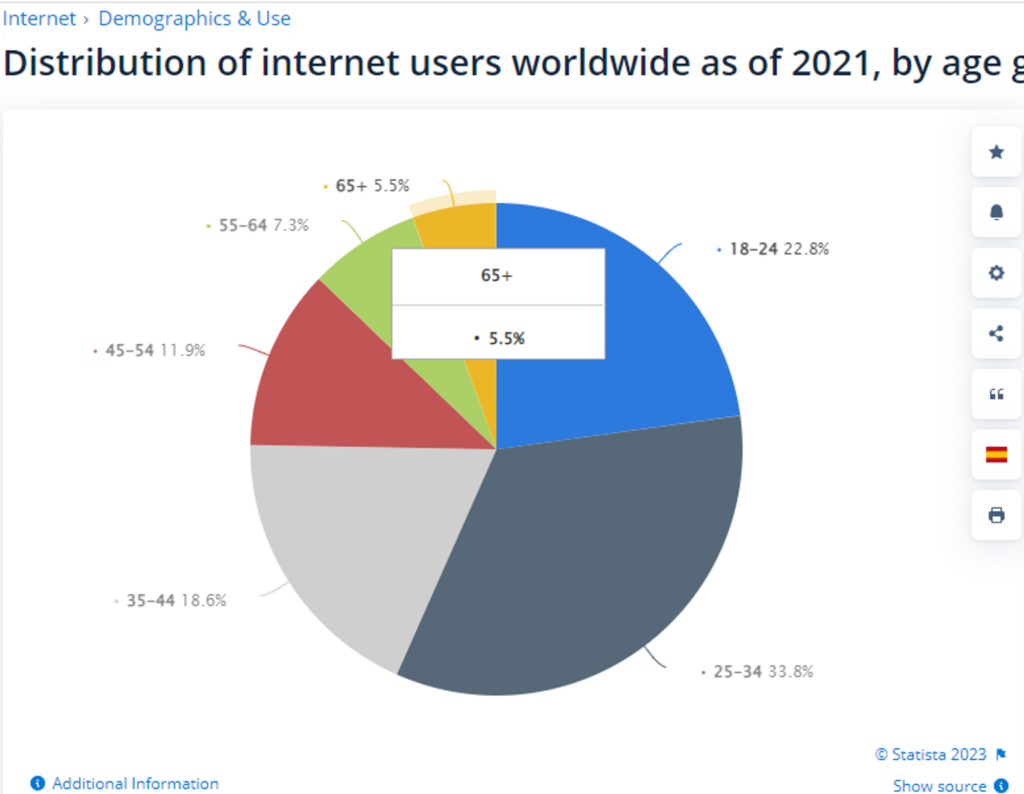
On average, young users aged 16-34 spend more than 7 hours a day on the internet. As people get older, the amount of time they spend online each day decreases.

1. United States
In the United States, the number of internet users aged 18-40 accounts for 36% of the total internet users. Specifically:
- Total population: 336 million people
- Population using the Internet: 308 million people
- The proportion of internet users aged 18-40: 36%
There are approximately 110.88 million internet users aged 18-40 in the United States.
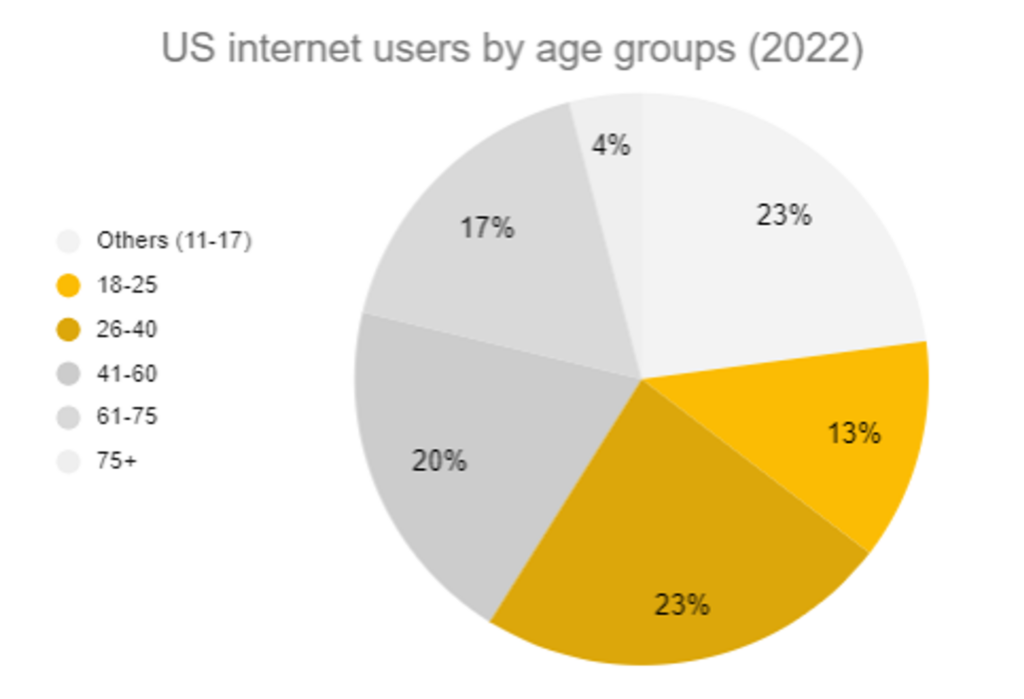
| Age | Internet user percentage between age groups (%) | Internet users (million) |
| Others (11 -17) | 23% | 70,594976 |
| 18-25 | 13% | 38,597724 |
| 26-40 | 23% | 72,46316 |
| 41-60 | 20% | 61,30464 |
| 61-75 | 17% | 52,93575 |
| 75+ | 4% | 12,60375 |
2. China
In China, the number of internet users aged 20-39 accounts for 37.5% of the total internet users, specifically:
- Total population: 1400 million people
- Population using the Internet: 1030 million people
- The proportion of internet users aged 20-39: 37.5%
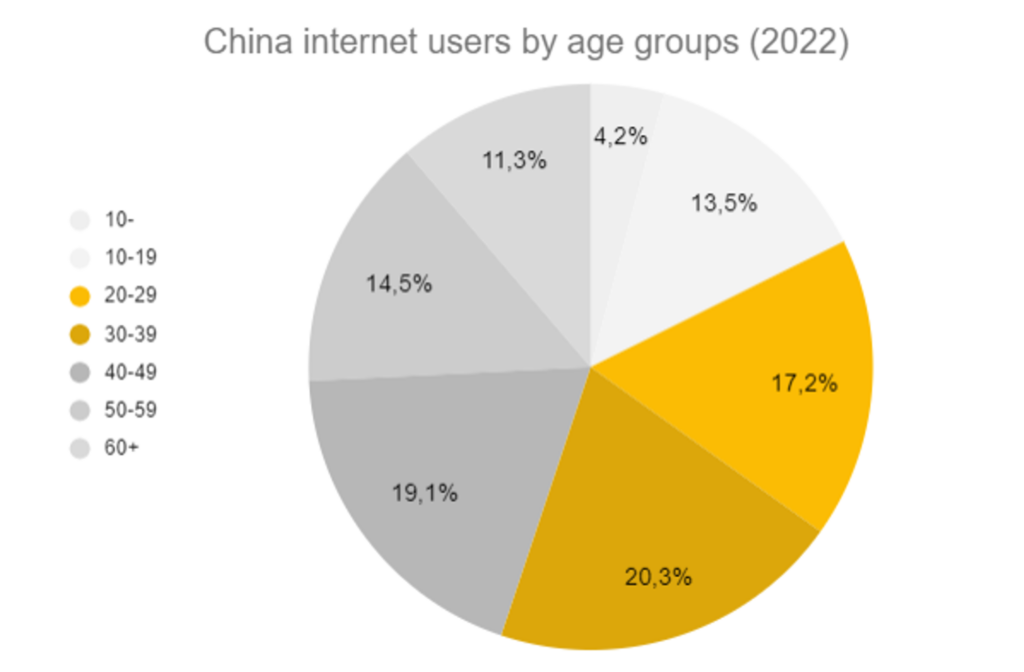
| Age | Internet user percentage between age groups (%) | Internet users (million) |
| 10- | 4.20% | 43.26 |
| 10-19 | 13.50% | 139.05 |
| 20-29 | 17.20% | 177.16 |
| 30-39 | 20.30% | 209.09 |
| 40-49 | 19.10% | 196.73 |
| 50-59 | 14.50% | 149.35 |
| 60+ | 11.30% | 116.39 |
3. India
In India, the number of internet users aged 20-39 accounts for 54% of the total, specifically:
- Total population: 1400 million people
- Population using the internet: 680 million people
- Proportion:
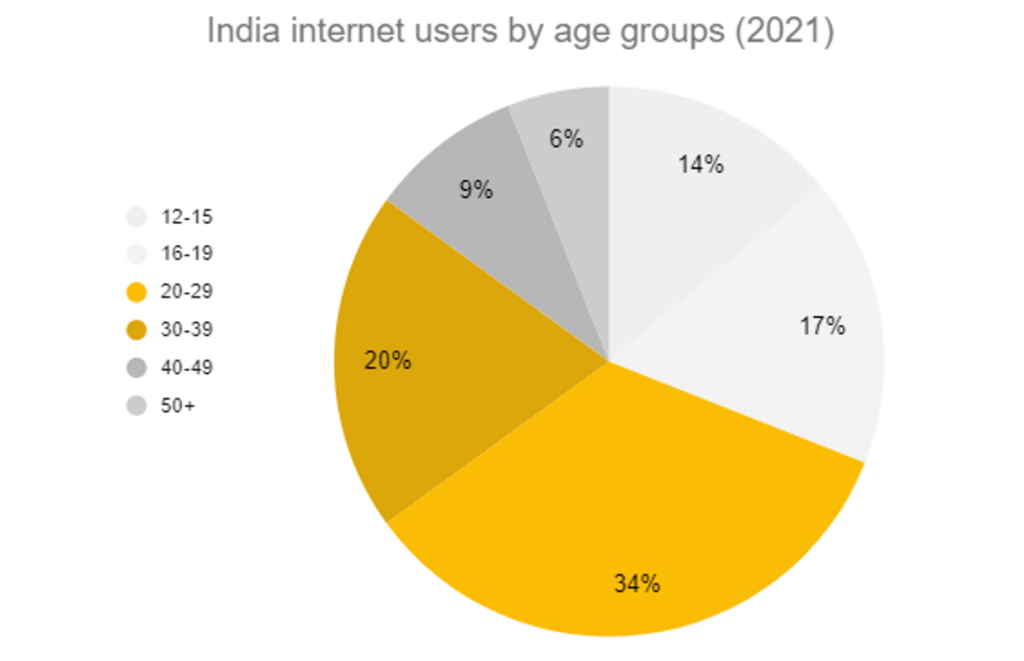
| Age | Internet user percentage between age groups (%) | Internet users (million) |
| 12-15 | 17% | 115.6 |
| 16-19 | 14% | 95.2 |
| 20-29 | 34% | 231.2 |
| 30-39 | 20% | 136 |
| 40-49 | 6% | 40.8 |
| 50+ | 9% | 61.2 |
4. Japan
In Japan, the number of internet users aged 20-39 accounts for 24.53% of the total, specifically:
- Total population: 125 million people
- Population using the internet: 103 million people
- Proportion:
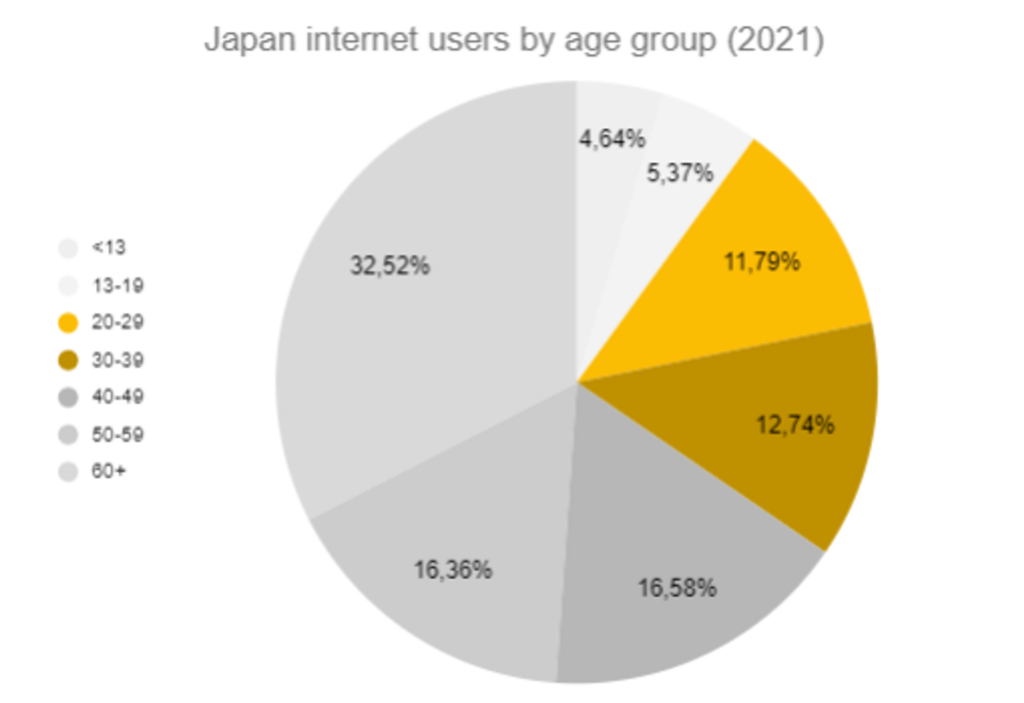
| Age | Internet user percentage between age groups (%) | Internet users (million) |
| 13- | 4.64% | 4.78 |
| 13-19 | 5.37% | 5.54 |
| 20-29 | 11.79% | 12.14 |
| 30-39 | 12.74% | 13.12 |
| 40-49 | 16.58% | 17.08 |
| 50-59 | 16.36% | 16.85 |
| 60+ | 32.52% | 33.49 |
5. Russia
| Age | Internet user percentage between age groups (%) | Internet users (million) |
| 17- | 24.23% | N/A |
| 18-24 | 7.15% | N/A |
| 25-34 | 14.26% | N/A |
| 35-44 | 17.16% | N/A |
| 45-54 | 13.06% | N/A |
| 55+ | 22.73% | N/A |
6. Vietnam, Phillipines, Indonesia
Southeast Asian countries (Vietnam, the Philippines, Indonesia) do not have specific data available for 2021 and beyond.
| Age | Internet user percentage between age groups (%) | Internet users (million) |
| 6-14 | 17% | N/A |
| 15-24 | 23% | N/A |
| 25-34 | 28% | N/A |
| 35-44 | 20% | N/A |
| 45-54 | 8% | N/A |
| 55+ | 4% | N/A |
| Age | Internet user percentage between age groups (%) | Internet users (million) |
| 5-12 | 10.9% | N/A |
| 13-18 | 8.0% | N/A |
| 19-34 | 23.1% | N/A |
| 35-54 | 23.9% | N/A |
| 55+ | 7.9% | N/A |
| Age | Internet user percentage between age groups (%) | Internet users (million) |
| 0-9 | 18% | N/A |
| 10-14 | 11.5% | N/A |
| 15-19 | 13.3% | N/A |
| 20-24 | 12.6% | N/A |
| 25-29 | 10.7% | N/A |
| 30-39 | 15.8% | N/A |
| 40-49 | 9.8% | N/A |
| 50-59 | 5.3% | N/A |
| 60-64 | 1.5% | N/A |
| 65+ | 1.4% | N/A |


